The 7 Managerial Habits of Highly Effective Chief Audit Executives
Order now!
engage HANS BEUMER as IA CONSULTANT or INTERIM CAE
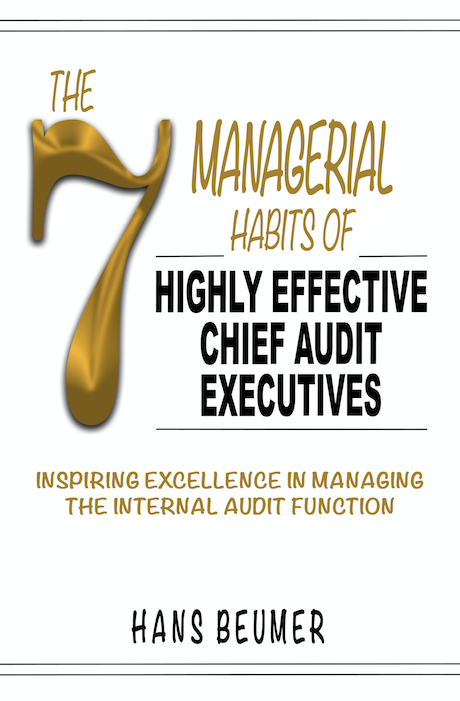
The 7 Managerial Habits of Highly Effective Chief Audit Executives addresses the question “What makes the Chief Audit Executive a highly effective manager of the internal audit function?” A holistic model captures the essence of managerial effectiveness in internal auditing in 7 habits. The book analyses and explains the key effectiveness levers for each of the 7 managerial habits. These habits present objective-focused and principle-based solutions to overcome effectiveness problems that leaders of internal audit functions may face.
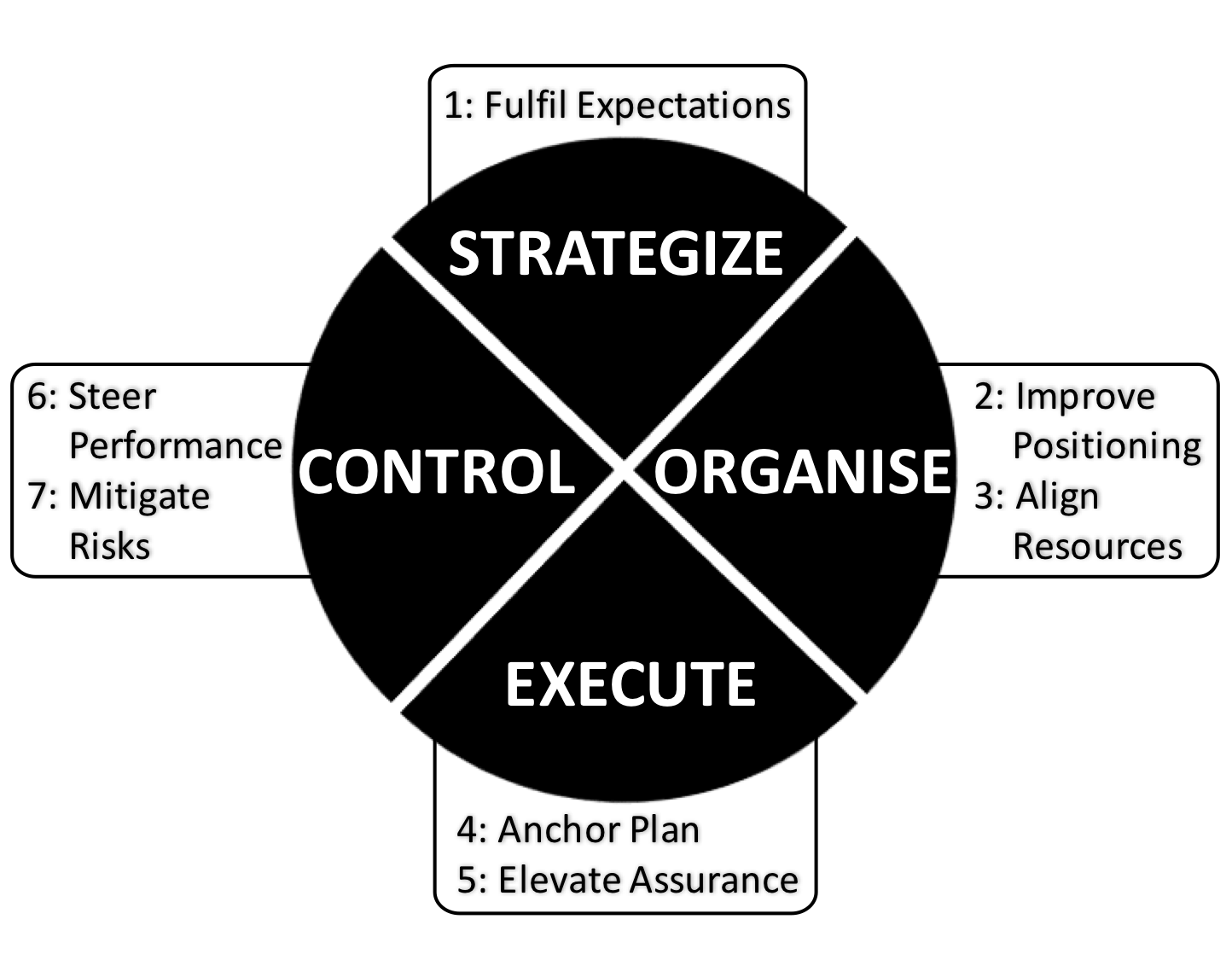
A step-by-step approach leads you to the highest level of effectiveness in managing the internal audit function. Enhanced goal achievement is its reward. Your stakeholders’ satisfactions peak. Your job satisfaction intensifies. Your bonus pay-out maximises. This shows the potential of the 7 habits. Realise your own potential!
+ + + + +
What is the difference between managing and leading? What is the difference between my book on the 7 Managerial habits and the 7 Leadership habits? Let me explain.
First, managing is an activity that revolves around a conversion process. The conversion process is the transformation of inputs into outputs. In this respect, managing is focusing on the productive use of resources. Conversion is at the center stage. Second, because managing is concentrating on a conversion process, it is not considered to be the same as leadership. Leadership revolves around influencing the behaviour of people. People are at the centre stage. Third, managing can be broken down in a number of core activities around the conversion process. These are planning, organising, executing and controlling. Planning is the managerial activity that determines objectives (outputs) and identifies the actions needed to achieve the objectives. Planning can be short-, medium-, and long-term, and includes a wide array of activities, including strategies and tactics. Strategies often refer to long-term plans, whereas tactics refer to specific actions that effectuate the strategy. Organising is the managerial activity that allocates the responsibilities for obtaining the inputs, operating the conversion process, and reaching the desired outputs. Organising is the coordination of the conversion activities and the establishment of structures that enable the conversion. Executing is the managerial activity that operates the conversion process. It is performing the actions that must achieve the objectives. Controlling is the managerial activity that monitors the conversion process and the achievement of objectives, and corrects the expected variances in output.
Managing revolves around activities, whereas leading revolves around people.The 7 Managerial habits focuses on the internal audit function’s activities of strategizing, organising, executing and controlling the internal auditing processes. The 7 Leadership habits focuses on the internal audit team members and the key stakeholders – board, management, and audit clients, and how to influence them to attain transformational internal auditing goals. The CAE as leader has a vision, boosts performance of the audit team members and develops talents, motivates and empowers the audit teams, makes the right hiring and firing decisions, and forges strategic alliances with all stakeholders.
The CAE as manager develops a strategy to implement the vision, organises the internal audit function through its positioning and alignment of audit resources, sets up and executes the annual audit plan through the audit engagements, and controls its activities through audit performance management and audit risk mitigation.
(The above text and figure are copyrighted)
Hardcover: ISBN 9783906861265
EBook: ISBN 9783906861272
Pages: 200
Language: English
Edition: First
Published: February 2018
Publisher: Hans Beumer Publications
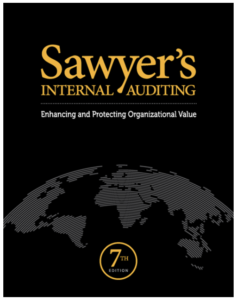
Contribution to SAWYER’S INTERNAL AUDITING 7th Edition
The IIA International Headquarters in Florida, USA, revised and updated SAWYER’S INTERNAL AUDITING.
Hans Beumer is a main contributor to this 7th Edition. Because of the strategic relevance of his Internal Audit Strategy books, Hans was contracted to author the first chapter of the book, covering the topic of the DEVELOPING AN INTERNAL AUDIT STRATEGY.
This 7th edition was published by the IIA in January 2019.
Book Preview (selected pages)

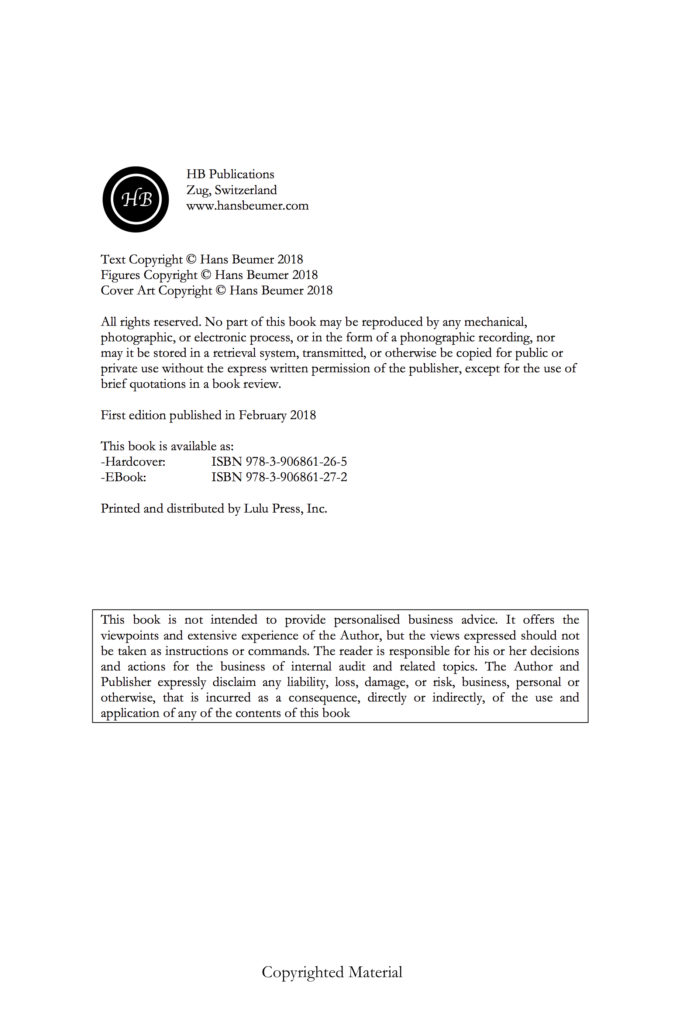
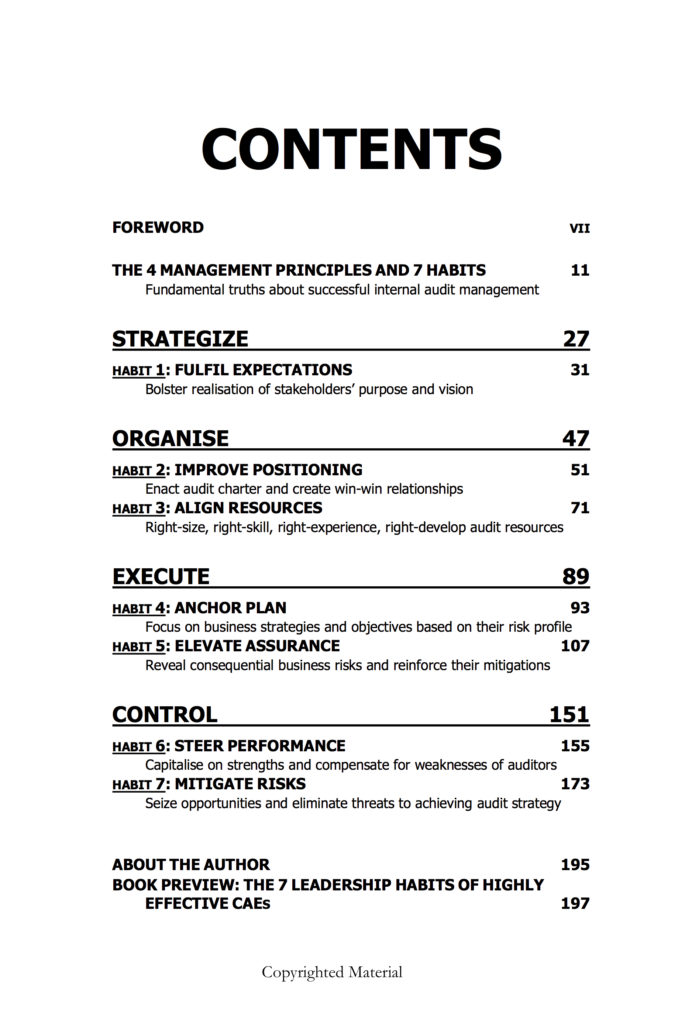
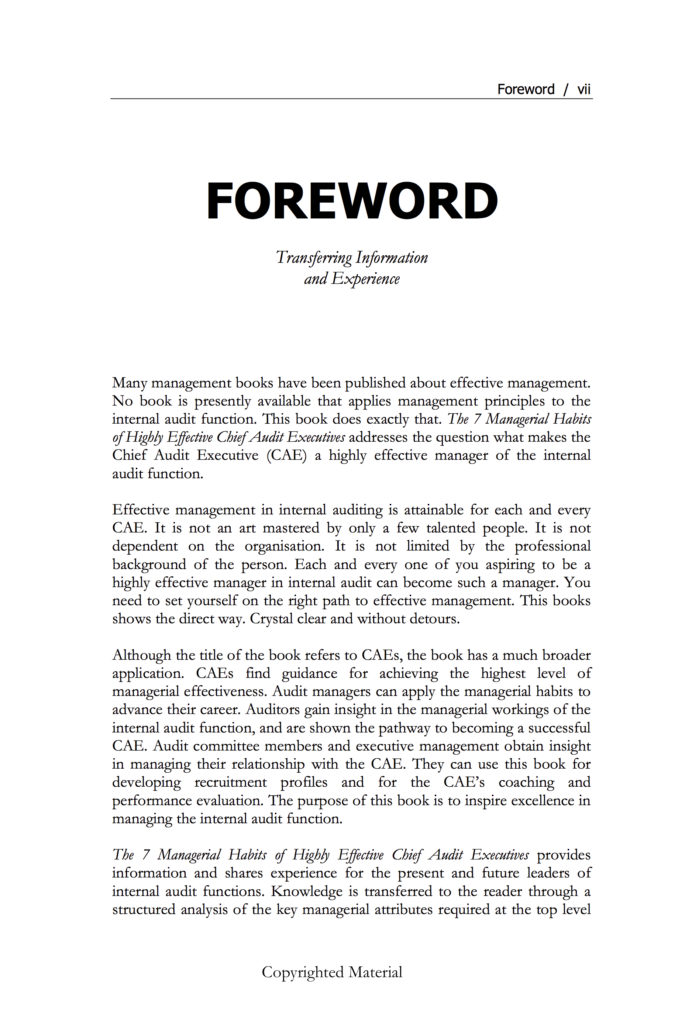
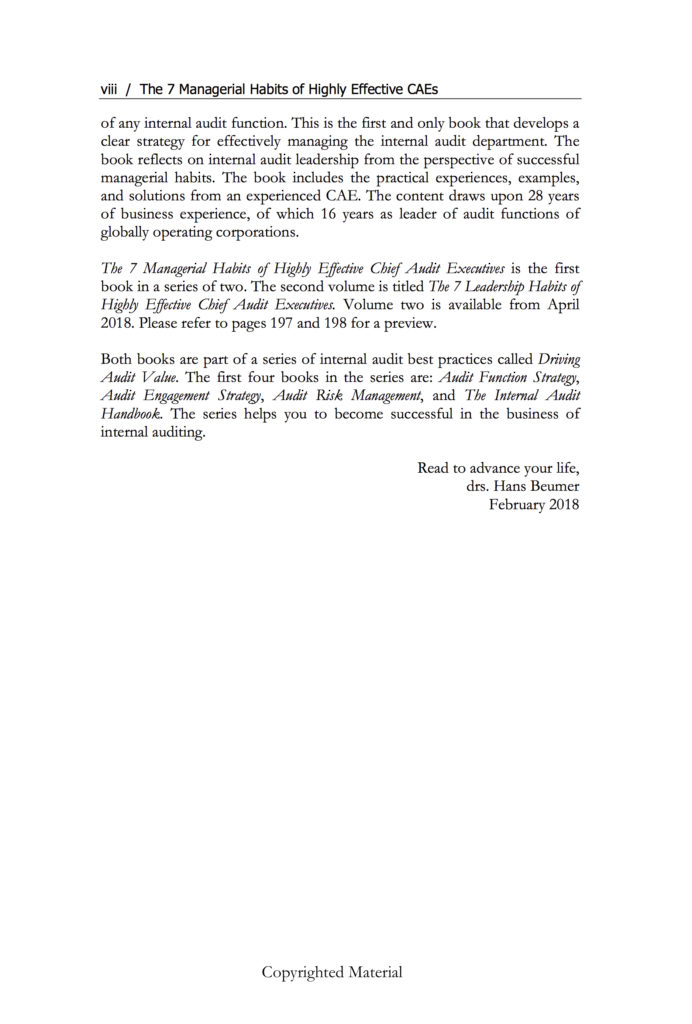
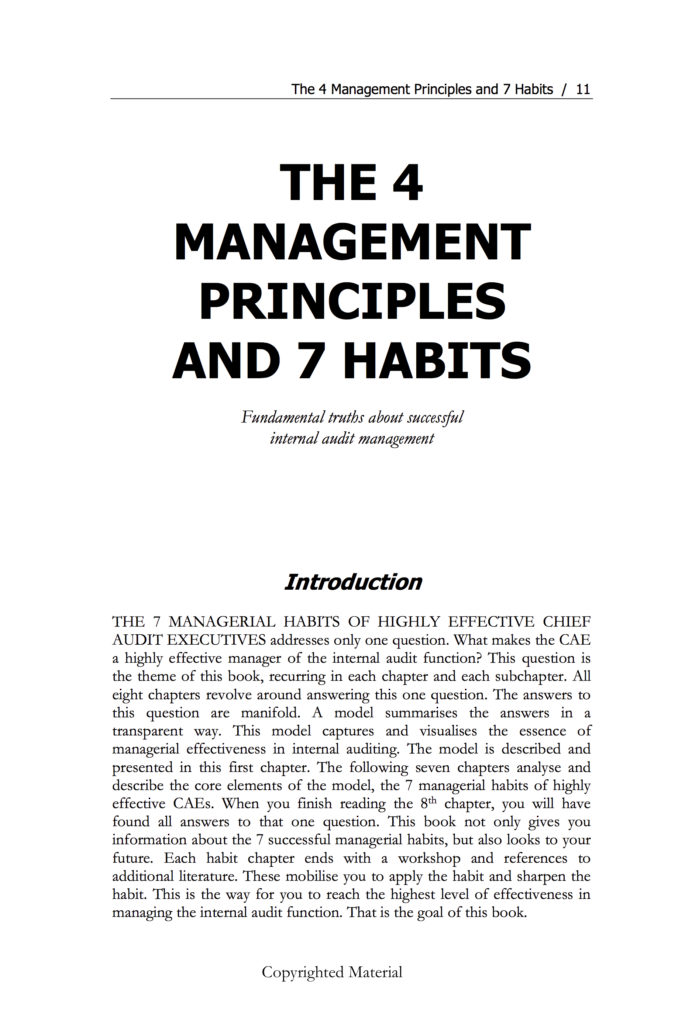
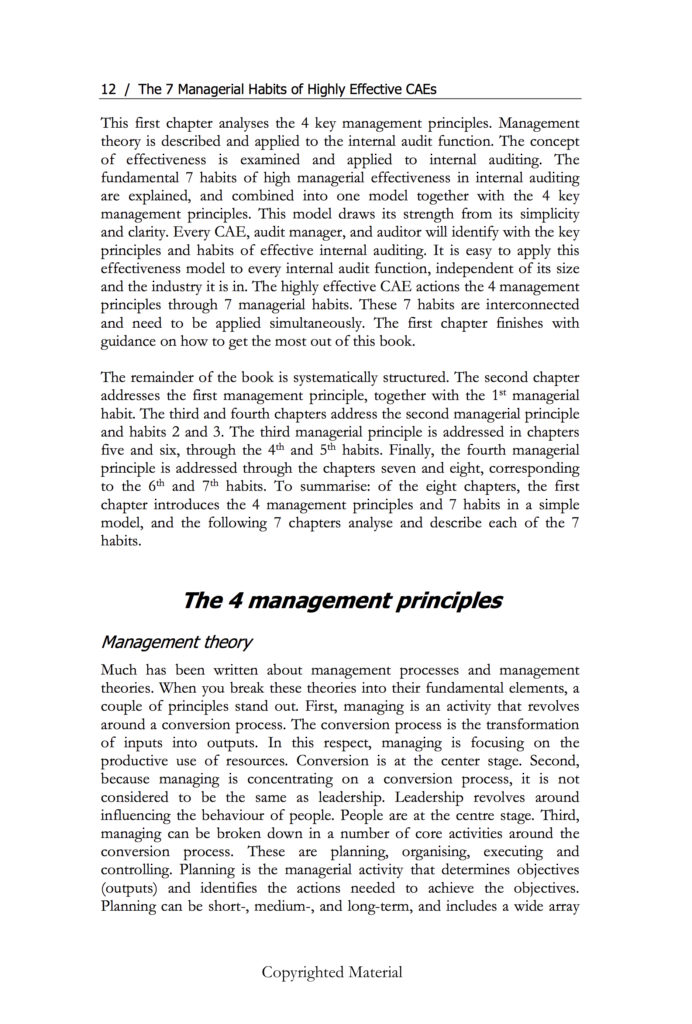
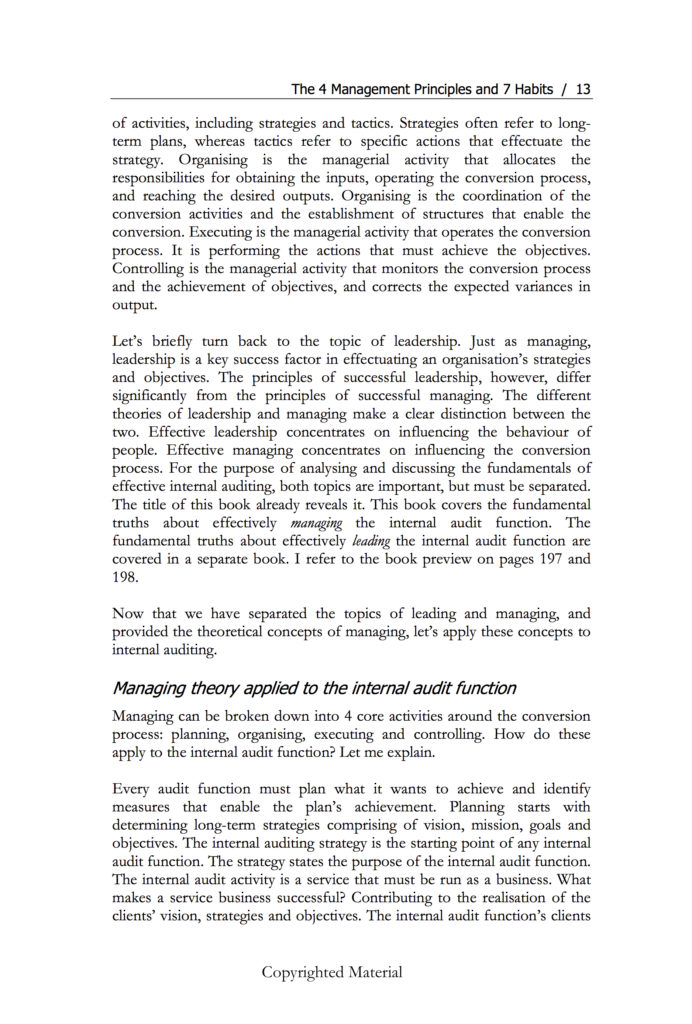

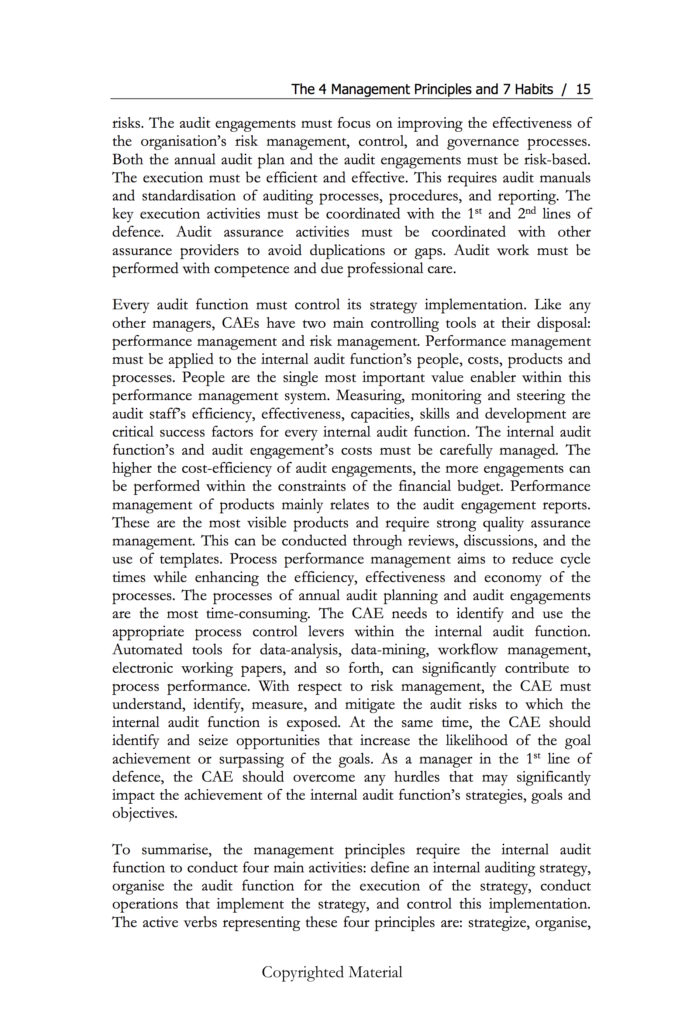
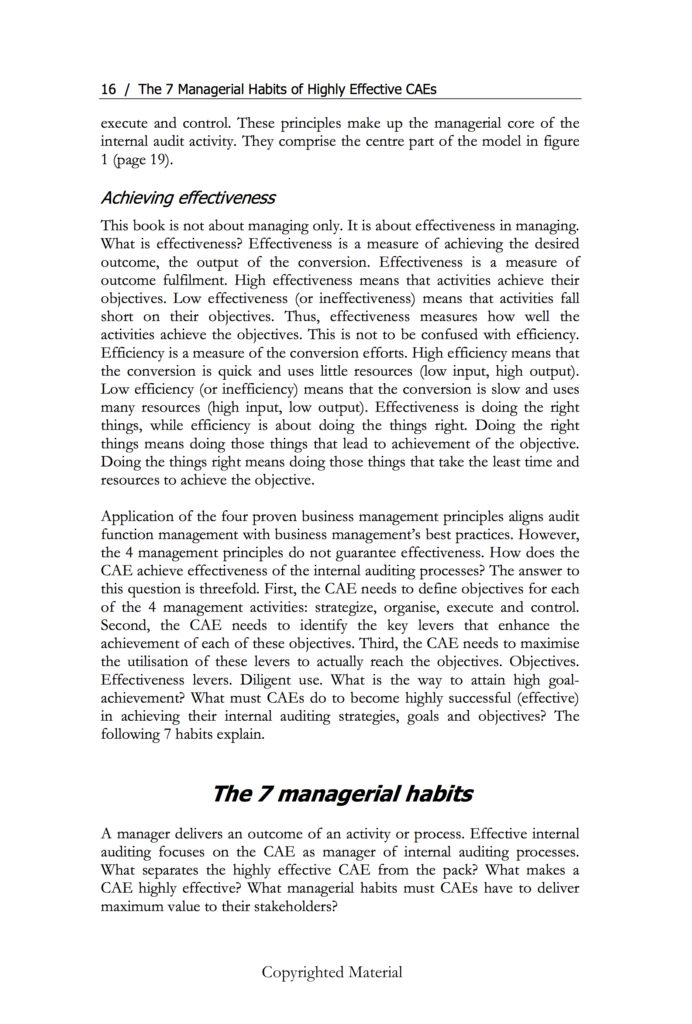
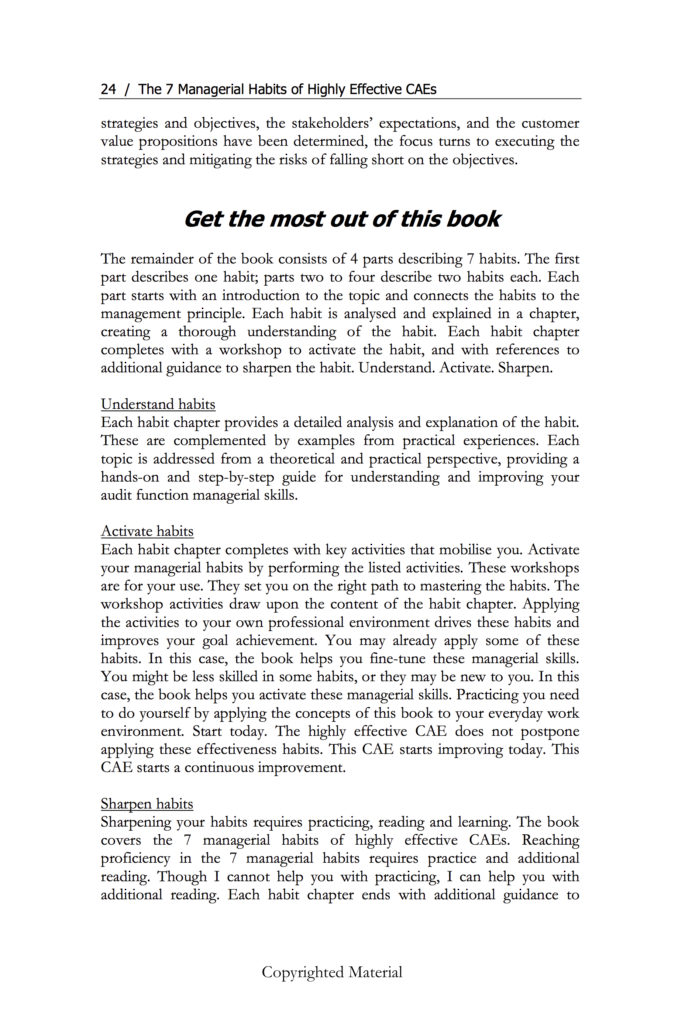
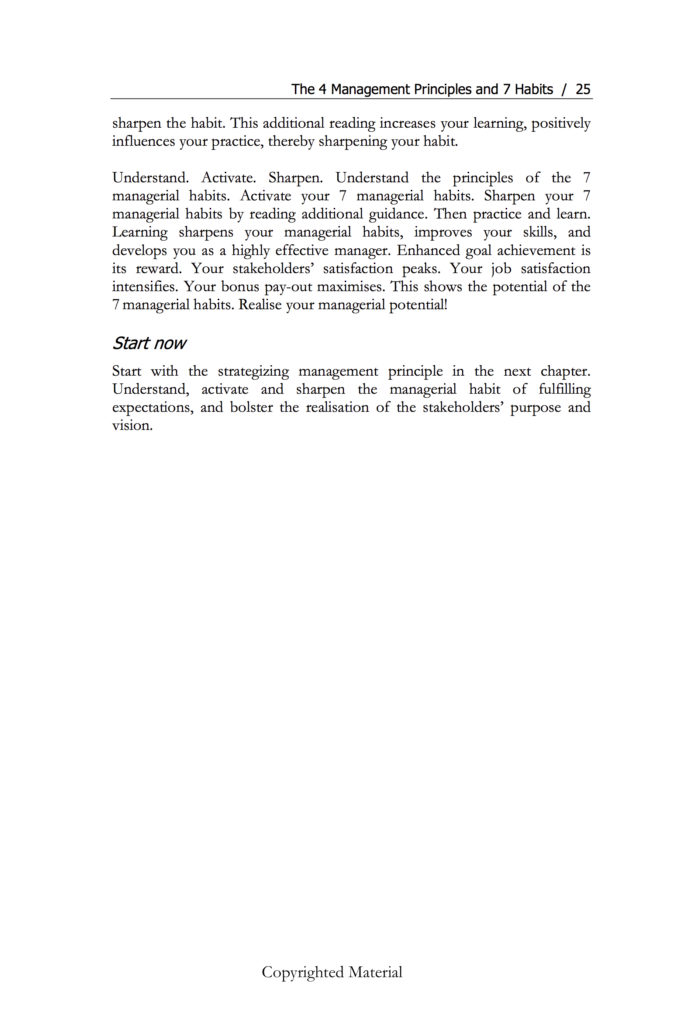
internal audit, audit function, chief audit executive, habits, effective managing, audit excellence, stakeholders, expectations, audit value, audit charter, audit resources, audit plan, audit engagement, audit assurance, risk management, performance management
